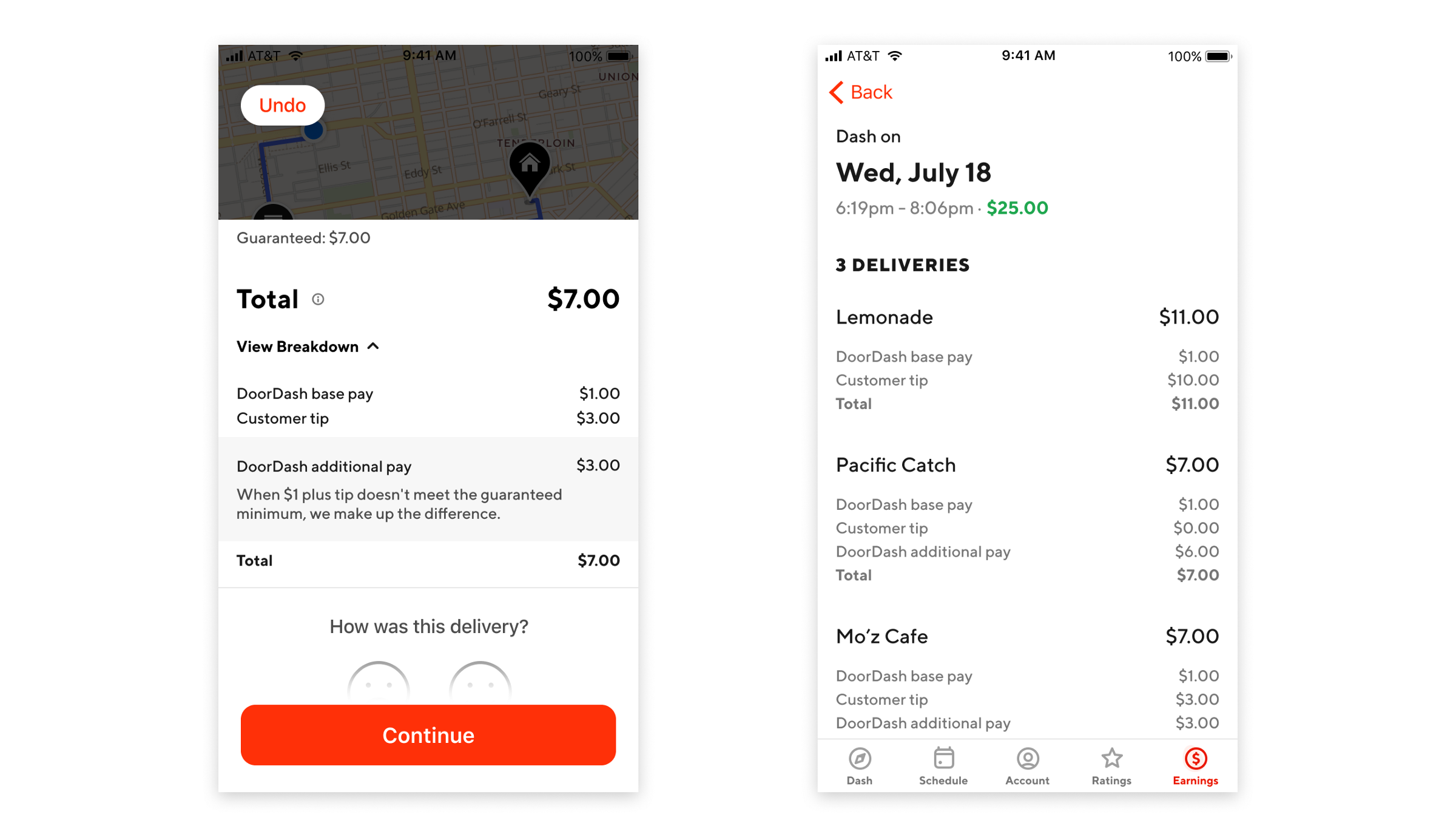There’s seemingly no end in sight for DoorDash’s compensation model where it subsidizes driver wages with customer tips. The mildly bright side, however, is that DoorDash is now providing more transparency after each completed delivery, DoorDash CEO Tony Xu wrote in a blog post today.
“With our current pay model, Dashers see a guaranteed minimum — including tips — prior to accepting a delivery,” Xu wrote. “The guaranteed minimum is based on the estimated time and effort required to complete the delivery. Providing this guarantee upfront means that Dashers are more likely to accept all kinds of deliveries because they know what their earnings will be even if the customer provides little or no tip.”
That means DoorDash’s base pay is sometimes just $1.
“Talking about transparency is good,” labor rights group Working Washington said in a statement to TechCrunch. “And admitting you pay $1/job is better than denying it. But $1 is still $1.”
In light of pay controversies at Instacart, DoorDash and Postmates, Working Washington formed the Pay Up Campaign, which unites thousands of workers across all those gig economy platforms.

“They continue to subtract tips from worker pay,” the organization said in its statement. “And they continue to mislead customers about where their tips are going. When a customer tips more, DoorDash pays less — in other words, the customer is tipping the company.”
Despite what DoorDash said in its blog post about what workers want, the Pay Up campaign says it wants a minimum pay floor of $15 per hour plus expenses for time with an active job, tips, and a detailed breakdown of pay.
Comments
Post a Comment